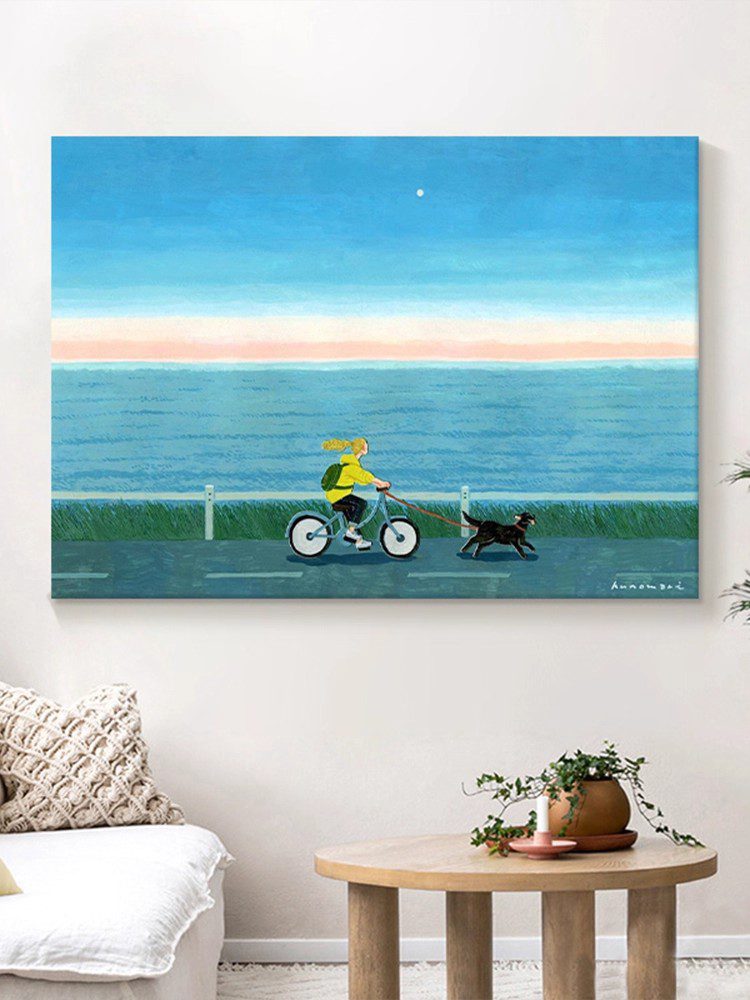Beginner’s Guide to Hand-Painted Oil Art: Starting from Scratch
Learning hand-painted oil art as a complete beginner can feel intimidating, but with the right approach, anyone can develop foundational skills and create meaningful works. This guide breaks down the essentials, from understanding materials to mastering basic techniques, ensuring a smooth introduction to this timeless medium.
Understanding Essential Materials and Tools
Before diving into painting, familiarize yourself with the core materials required for oil art. Start with a set of basic brushes—flat, round, and filbert shapes—to experiment with different strokes. Synthetic brushes are often recommended for beginners due to their affordability and durability. Next, invest in a small range of oil paints in primary colors (red, blue, yellow) along with white and black. These will allow you to mix a broad spectrum of hues without overwhelming your palette.
Canvas selection is equally important. Begin with pre-primed cotton canvases, which are forgiving and easy to work on. For practice, you can also use canvas panels or heavy paper coated with gesso, a primer that prepares surfaces for oil paint. Additionally, gather a palette knife for mixing colors, a jar of linseed oil or turpentine for thinning paint, and a rag for cleaning brushes. Having these tools organized and within reach will make the painting process more efficient and enjoyable.
Setting Up Your Workspace for Success
Creating a dedicated workspace is crucial for maintaining focus and avoiding distractions. Choose a well-lit area with natural light if possible, as it helps in accurately judging colors and details. If natural light isn’t available, invest in a daylight-balanced lamp to mimic natural conditions. Ensure your workspace is ventilated, especially when using solvents like turpentine, which can emit strong fumes.
Organize your materials systematically. Place your palette, brushes, and paints within easy reach to minimize interruptions during painting. Use a container to hold your solvents and keep a separate jar for clean water if you’re incorporating water-mixable oil paints. A sturdy easel or a flat surface propped at a slight angle can improve posture and reduce strain during long sessions. Finally, protect your workspace with a drop cloth or old sheet to catch any spills or drips, keeping your environment tidy and stress-free.
Mastering Basic Brush Techniques
Brushwork is the backbone of oil painting, and mastering a few fundamental techniques will open doors to endless creative possibilities. Start with the dry brush technique, where you use a brush with minimal paint to create textured, scratchy strokes. This is ideal for depicting rough surfaces like tree bark or rocky landscapes. To practice, load your brush lightly and drag it across the canvas with varying pressure to observe how the texture changes.
The wet-on-wet technique involves applying fresh paint onto a still-wet layer, allowing colors to blend seamlessly. This method is perfect for creating soft transitions, such as skies at dawn or sunset. Begin by laying down a base color, then introduce another hue while the first is still tacky. Use gentle strokes to merge the colors, avoiding overworking the area to prevent muddiness.
For defining edges and adding precision, the stippling technique uses small dots or dashes of paint. This approach works well for adding detail to foliage, hair, or intricate patterns. Dip your brush into the paint, then tap it onto the canvas repeatedly to build up texture. Vary the density and spacing of the dots to create depth and contrast.
Exploring Color Mixing and Theory
Color mixing is a skill that transforms a limited palette into a vibrant spectrum. Begin by learning the basics of the color wheel, which organizes hues into primary, secondary, and tertiary categories. Primary colors (red, blue, yellow) cannot be created by mixing, while secondary colors (orange, green, purple) are formed by combining two primaries. Tertiary colors emerge from mixing a primary with a secondary, such as red-orange or blue-green.
To mix colors effectively, start with small amounts of paint on your palette and gradually adjust the proportions. For example, to create a warm green, combine blue with a touch of yellow, then add white to lighten it if needed. Keep in mind that oil paints dry darker than they appear when wet, so test your mixtures on a scrap piece of canvas before applying them to your main work.
Understanding color temperature is also vital. Warm colors (reds, oranges, yellows) evoke energy and closeness, while cool colors (blues, greens, purples) suggest calmness and distance. Use this knowledge to create mood in your paintings. For instance, a landscape painted with cool blues and greens might feel serene, whereas a composition dominated by warm tones could convey excitement or passion.
Building Confidence Through Simple Projects
As a beginner, tackling complex subjects can lead to frustration. Instead, start with simple projects that allow you to focus on technique rather than detail. A still life featuring a single object, like an apple or a vase, is an excellent choice. Arrange your subject in good light and observe how shadows and highlights define its shape. Use broad strokes to block in the basic forms, then refine the details gradually.
Landscapes are another beginner-friendly option, offering opportunities to practice color mixing and brushwork. Begin with a horizon line to establish perspective, then add elements like mountains, trees, or water using loose, expressive strokes. Don’t worry about perfection—the goal is to capture the essence of the scene rather than replicate it exactly.
Abstract compositions provide a liberating way to experiment with color and form without the pressure of realism. Use your brushes to create bold shapes, lines, or patterns, focusing on how colors interact and evoke emotions. This approach encourages creativity and helps you develop a personal style from the outset.
By following these steps and practicing regularly, you’ll gradually build the skills and confidence needed to excel in hand-painted oil art. Remember that progress takes time, and every stroke brings you closer to mastering this versatile and rewarding medium.
